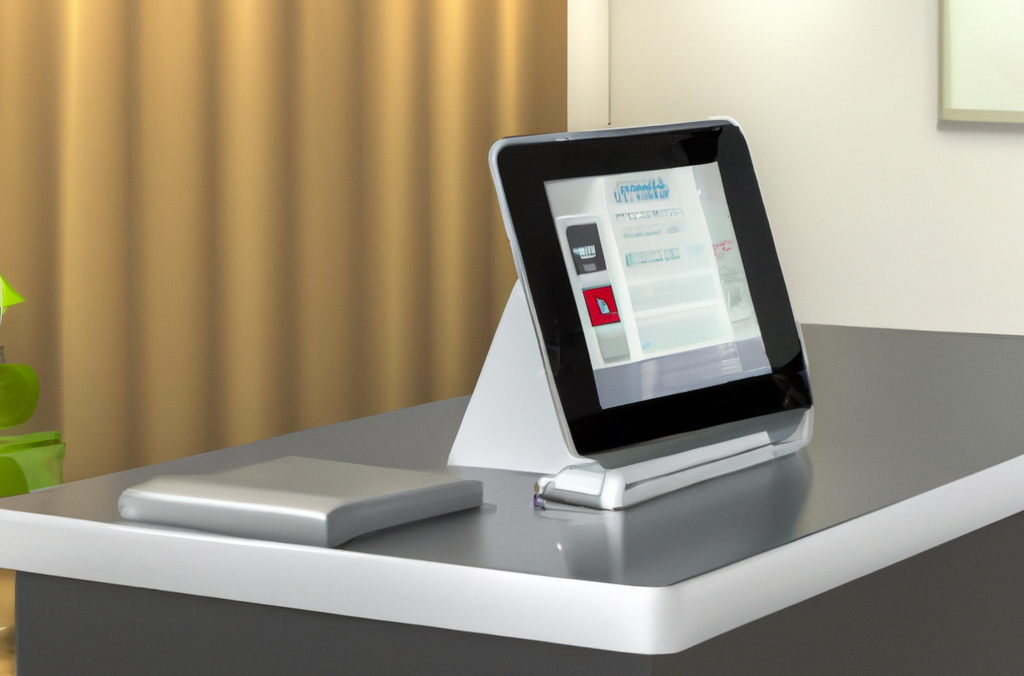Using Software to Support Your Growing Software Company

Why should software firms adopt the software of other firms? A company focused on creating its own software products may be so laser-focused on their own products that they don’t think critically about the products they use on a day-to-day basis.
Yet, software companies should be the first to consider and adopt new technologies created by other firms. Why? For this simple reason that it is important to practice what they preach. In addition, doing so will help them discover for themselves the efficiency that using software products can bring to their organizations.
Eat Your Own Dog Food
The concept of “dogfooding” is one many software firms may already be familiar with. The idea is that “you should eat your own dog food,” i.e. use your own products. Any good developer should sit down and use the application they are writing from the standpoint of the end-user. This allows them the opportunity to not only find bugs but to see how the system actually works in a real-life scenario.
In the case of Gmail, the developer first used the product to improve internal communications at Google before the product was released to the general public. This is a prime example of a company using its own product in order to make sure it was working properly before being used by people outside the company.
Of course dogfooding does more than just make the product functional. When an owner or an employee uses the company’s own services, it sends a message that the product is of high quality and good value and that the company can be trusted. From a marketing perspective, that is the best message you can send. On the other hand, if you aren’t willing to use your own product to fulfill your needs, what right do you have to ask others to use it? What message does it send when former employees who created social media are now unplugging? It can be a marketing nightmare.
But dogfooding can go one step further. Software companies are continually asking their potential clients:
- to push the envelope of what is possible
- to trust that a software application can accomplish a task better than a person
- to try cutting-edge technologies and software programs.
Are these companies doing the same for themselves? This may be less about eating their own dog food and more about heeding their own advice. If an organization truly believes software can make life easier, than it ought to lead by example and allow the software of others to add efficiency to the organization.
Easy Street
Of course, software actually does make life easier or more productive in many different ways.
- Text messages and instant messages have made one-question emails nearly obsolete. It is simply more efficient to have a conversation via text or Slack rather than send a string of emails back and forth.
- We could go back to faxing documents (and in some cases, faxing is preferred as it is more secure) but snapping a photo with a smartphone and sending it via email or message is significantly less tedious and saves paper.
- In the modern office, employees are using remote technology to work from home, at the office, or from anywhere around the world.
Of course, productivity tools don’t really help if they are distracting employees. We know that switching tasks or being interrupted can cause a tremendous drop in productivity because it takes so long to get back on task. It is important to evaluate any software you are considering to determine if it is actually saving time, or just adding a layer of complexity.
That being said, companies owe it to themselves to explore the myriad ways software can make their businesses more efficient and help them save time and/or money.
Leveraging software can increase productivity or produce quality results by:
- minimizing distractions
- simplifying current processes
- bringing in more revenue
- increasing employee performance and/or satisfaction
What’s Out There and How to Choose It
With the proliferation of software companies, it seems there really is an app for everything. In order to select software and technology that will actually benefit the organization, companies should consider the following questions.
- What are our pain points? What are the processes that seem to be bogging down employees? Does payroll take way longer than it should? Are company expense reports time consuming and complex? Are too many visitors clogging up the lobby? Are inboxes overflowing? Where there are problems, there are opportunities for locating the right solution.
- What are our goals? Looking at the company goals can point to obvious software solutions. Goals provide a lens through which processes that can be optimized, and software can be explored to support those goals. If the company knows it wants to increase revenue by 50 percent, and it expects to do that through increased customer relationship-building, exploring ways to build those relationships is a must. A goal to reduce employee turnover might point to a pain point of why employees are leaving.
- What is out there? Sometimes, it might just be a matter of exploring possibilities. Dozens of lists of productivity and business apps exist – here’s one, – and taking a few moments to browse a list might lead to a pivotal moment of discovery. Learning what is possible increases the probability of finding something that will move the company forward.
Ideas to Step up Your Game
Of course, software and technology products exist in all sorts of spheres. Many of these products can be applied to organizations of various shapes, sizes and purpose. The following is a list of ideas for incorporating software and technology into your own software firm.
Financials
When it comes to numbers, software is often significantly faster than most people. There are a variety of software companies out there ready to help deal with all that money that moves around in the business. Whether or not you’re keeping close tabs on incoming money from customers and outgoing money to vendors and other expenses can make or break a company. Organizations need up-to-date reports for their financial health and having everything already categorized will make tax time that much easier.
One thing to watch for with any software, but especially with financial data, is security. Look for high-level encryption to ensure your data is safe.
1) Accounting Software
Accounting software makes it easy to handle all of your accounts payable and accounts receivable. Some work in tandem to pull your bank account information and generate high-quality reports. Cloud-based platforms make it easy to access from anywhere and artificial intelligence can deal with handling some repetitive tasks to save time. Some features you may want to look for are:
- access for multiple users
- mobile access
- tax preparation
- integration with third-party systems (like your point-of-sale systems or banks)
- invoicing
- basic accounting features
2) Expense Reports Tracking
Another thing to consider are apps designed to handle expense reports. When you have employees who have to travel for their jobs, or even who just attend a conference from time to time, they incur a number of expenses that may need to be reimbursed. Keeping track of those expenses on the go can be a chore, and filling out paper reports is time-consuming. Holding onto and filing receipts is so 2007. Smartphone apps allow expenses to be tracked, categorized and submitted right in-hand and in real-time.
Office and Building Management
Unless an organization is 100 percent remote, managing the office takes a significant amount of time and attention. Space management is a many-faceted responsibility that includes:
- Scheduling the use of common facilities, like conference spaces and training rooms
- Visitor management, including handling deliveries and all guests to the facility
- Ordering supplies for common consumption
- Scheduling regular maintenance for building systems and equipment
1) Space Scheduling
Whether you have a plethora of conference rooms, or whether you are a coworking location filled with hot desks, keeping track of the schedule of usable spaces is a must. There is nothing worse than making a plan to use a conference room, only to find another group in the space. If there is a centralized room scheduling software, then managing space use becomes a breeze.
Advantages to using this type of software include:
- Avoiding space conflicts, like that mentioned above.
- People can schedule space far in advance, or on-the-spot.
- Some software can integrate with touch-screen signs located outside of the room. These signs can display the schedule of the room, allowing the spur-of-the-moment meeting to occur between scheduled reservations.
- In the case of shared and flex workspaces, coworking space software can integrate with financial tools to automatically compile invoices for members based on their desk usage and the number of hours.
2) Facilities Maintenance
Keeping the HVAC system running, repairing plumbing or electrical, and even cleaning carpets are part of a comprehensive maintenance plan for any facility. Large and small organizations need to stay on top of these sorts of tasks to ensure the building is always ready to be the optimal environment for a successful business. Maintenance management software gets all those nagging tasks in one place, allowing organizations to create a regular schedule for when they should occur.
3) Visitor Management
Every business has visitors, and those visitors range from the Vice President from the corporate office to interview candidates to the floral delivery person. Some companies have such an informal visitor intake process that visitors can spend quite a bit of time waiting for someone to help them, or wandering around lost trying to find their contact person.
A visitor management system with a check-in kiosk can alleviate the problem. Some systems will even automatically connect with the guest’s host via text message, email or other designated method. This is especially great for informal workplaces where employees move around frequently and/or do not have designated desks.
Such systems also provide easy-to-search records for security purposes. Unlike pen-and-paper visitor sign-in sheets, a digital check-in system automatically timestamps and logs all visitors. An added benefit of such systems is the ability to integrate visitor records with Contact Relation Management systems (CRMs), which will be discussed in the next section.
Marketing, Marketing, Marketing
Almost every organization spends an incredible amount of time marketing to potential clients or donors. In order to build relationships, it is imperative that organizations keep track of contact information, record when each person was last contacted, and execute a plan to stay at the forefront of their consciousness. Unsurprisingly, there are a number of software options to help build these relationships
1) Contact Relationship Management
Contact Relationship Management (CRM) systems are one of the most well-known types of systems for business. These databases offer the ability to enter all contacts into one system with their contact information, and to run reports and analytics on how people are being contacted, and keep notes about any conversations that have occurred. They can be integrated with other software that capture customer data, like the visitor management systems noted above, or with email marketing services.
2) Email Marketing
Email marketing is still considered one of the most effective ways to gain and retain customers. Email marketing software makes email marketing easy. While you can send emails to customers directly from many CRMs, email marketing solutions provide an easy, all-in-one place to design emails and email newsletters, schedule them to be sent, and set up automatic email campaigns that are initiated upon a customer click.
Keeping Employees Happy and Productive
An organization is nothing without its employees. Someone has to do the heavy lifting of making everything run smoothly, and while software can help, people still have to handle everything from customer service, to engineering, to innovating. Maintaining morale and job satisfaction while also aiding in productivity are important for everyone, employee and organization alike.
1) Productivity Tools
There are so many productivity tools out there, you can virtually pick any topic and find something that will handle a task. Some apps and tools:
- Track time spent working on different projects to facilitate appropriate billing.
- Handle multiple social media feeds.
- Maintain cloud-based databases to store any and all notes, ideas, files, and more.
- Coordinate calendars to find available meeting times.
- Conduct polls.
- Guide relaxation and meditation.
- Create to-do lists and set reminders.
This is definitely a place to spend a little time exploring to figure out which tools work best for your organization.
2) Remote Technology
It’s no secret that people appreciate the ability to work remotely and utilize flexible schedules. This is important for freelancers, those who like the coworking trend, and even for those who travel for their jobs. Even enterprise offices may find it beneficial to allow people to work from home occasionally, as often as once or twice a week. A number of technology solutions facilitate this type of work.
As with the productivity software, some exploring will be required to figure out which makes the most sense for a particular organization. A company may most benefit from:
- Video calling
- VOIP phone call capabilities
- Instant messaging systems
- Common file storage and collaboration locations
- Screen-sharing for live meetings
Remote work is here to stay, even as some big companies are dialing back remote work policies. Giving employees the tools to make it successful is important for the productivity of the business.
Conclusion – What Works For You?
Obviously, with so many software possibilities out there, even a software company has to pick and choose what works best for their company. A company marketing to a select number of niche businesses may not need an extensive CRM, while a completely remote company will have few – if any – facilities to schedule and maintain.
Whatever the case, software companies should take a good, hard look to see if they are living their own vision: a vision of a world where software makes life easier for everyone. Adopting software solutions themselves shows they are taking the message to heart.






